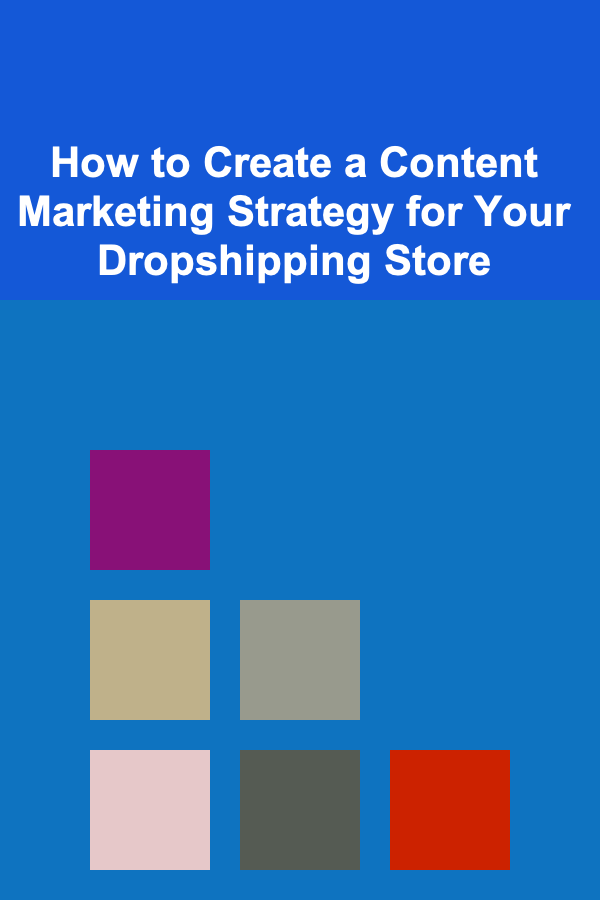
Marketing Manager's Handbook: Proven Techniques for Maximizing ROI and Engagement
ebook include PDF & Audio bundle (Micro Guide)
$12.99$10.99
Limited Time Offer! Order within the next:

As a marketing manager, the ultimate goal is to drive results: improving ROI, boosting engagement, and ensuring your marketing efforts align with your company's overarching objectives. Whether you're managing digital marketing, traditional marketing, or a combination of both, maximizing your marketing strategy's effectiveness is crucial. This actionable guide will explore proven techniques for achieving optimal ROI and engagement across different channels, providing you with the necessary tools and insights to refine your marketing initiatives.
Understanding the Core Principles of Marketing ROI
Before diving into the techniques, let's first define what marketing ROI (Return on Investment) means and why it is a vital metric for any marketing manager. In its simplest form, ROI is the ratio of the net profit generated by a marketing campaign to the cost of that campaign. The higher the ROI, the more effective the campaign is at converting investment into revenue.
Achieving high ROI means making smart decisions in your marketing strategy, balancing budget constraints, and maximizing the impact of every dollar spent. Similarly, engagement refers to how effectively your marketing efforts foster meaningful interactions with your target audience---whether it's through clicks, likes, shares, comments, or actual sales conversions.
Let's break down the actionable steps that will allow you to effectively maximize ROI and engagement.
Data-Driven Decision Making
Effective marketing managers use data to guide their decisions. Whether you're considering which channels to invest in, what content to create, or how to optimize your ad spend, data should inform all key decisions.
Key Techniques:
- Leverage Analytics Tools: Use tools like Google Analytics, social media insights, and CRM software to track consumer behavior, campaign performance, and overall customer engagement. For example, Google Analytics helps you track conversions, user paths, and bounce rates, providing insights into which areas need optimization.
- Track Customer Lifetime Value (CLV): CLV measures the total revenue a customer will bring over the course of their relationship with your company. Understanding CLV allows you to allocate your marketing budget more effectively, focusing on high-value customers.
- A/B Testing: Test different versions of your ads, email campaigns, landing pages, and even product offerings. This allows you to understand what resonates best with your audience and continuously refine your strategy for higher engagement.
Actionable Steps:
- Set up conversion tracking on your website and digital platforms.
- Monitor customer behavior closely to uncover opportunities for deeper personalization.
- Regularly analyze and update your customer personas based on recent data.
Content Personalization at Scale
Personalization is no longer a nice-to-have---it's a must. Customers expect relevant and tailored content that speaks to their specific needs. Personalization not only improves engagement but also boosts conversion rates and customer loyalty.
Key Techniques:
- Dynamic Content: Use dynamic content tools to serve personalized experiences to different segments of your audience. For instance, you can display different calls to action (CTAs) based on the user's behavior on your site.
- Email Marketing Automation: Automate personalized email campaigns based on user actions, demographics, or behaviors. Tools like Mailchimp, HubSpot, and ActiveCampaign allow you to create triggered email sequences that respond to customer interactions in real time.
- Product Recommendations: On e-commerce sites, displaying personalized product recommendations based on browsing history and previous purchases can increase both average order value and customer retention.
Actionable Steps:
- Implement a recommendation engine if you have an e-commerce platform.
- Create dynamic landing pages that adjust based on the user's behavior or location.
- Set up segmented email lists and ensure content is relevant to each group.
Omnichannel Marketing Strategy
An omnichannel approach ensures a seamless experience across all touchpoints, from social media to email to your website and in-store. Today's customers expect brands to deliver consistent messaging and a smooth experience no matter where they interact.
Key Techniques:
- Integrated Campaigns: Ensure that your messaging is consistent across different channels. If you're running a promotion, make sure it's communicated consistently across your email marketing, paid ads, social media, and in-store displays.
- Retargeting: Utilize retargeting strategies to capture potential customers who have interacted with your brand but haven't converted yet. Platforms like Facebook and Google Ads allow you to create highly targeted ads for users who've visited your website or abandoned their cart.
- Cross-Device Experiences: Ensure your campaigns are optimized for both desktop and mobile. A responsive website and mobile-friendly ads are essential for keeping customers engaged across devices.
Actionable Steps:
- Map out your customer journey across all touchpoints and ensure each one is optimized for seamless transitions.
- Use retargeting strategies to re-engage lost prospects.
- Consistently track your cross-channel performance to identify any gaps in the customer experience.
Influencer Marketing and Partnerships
Influencer marketing has exploded in recent years, offering a unique way to connect with highly engaged audiences. Partnering with influencers in your industry can help you reach a larger and more targeted audience, improve brand credibility, and ultimately boost engagement and ROI.
Key Techniques:
- Micro-Influencers: Partnering with micro-influencers (influencers with smaller but highly engaged audiences) can offer better engagement rates at a lower cost than larger influencers. Micro-influencers often have more niche, loyal followers, making their endorsement more impactful.
- Affiliate Marketing: Consider setting up an affiliate marketing program to encourage others to promote your products in exchange for a commission on sales. This performance-based model ensures that you're only paying for actual sales, improving ROI.
- Content Collaboration: Work with influencers to co-create content that resonates with their audience while still promoting your brand. This could include blog posts, Instagram stories, YouTube videos, and other forms of engaging content.
Actionable Steps:
- Identify influencers who align with your brand values and have an audience that overlaps with your target market.
- Establish clear campaign goals with your influencers to measure success.
- Set up an affiliate marketing program to track performance and results.
Conversion Rate Optimization (CRO)
To maximize ROI, it's crucial to not only drive traffic but also ensure that the traffic you attract converts into sales or leads. Conversion rate optimization (CRO) involves fine-tuning your marketing funnels to ensure you're getting the most value out of every visitor.
Key Techniques:
- Landing Page Optimization: Test different landing page designs, headlines, CTAs, and images to see what yields the highest conversion rates. A/B testing is critical here to ensure you're using the most effective elements.
- User Experience (UX): A seamless and enjoyable user experience is key to reducing bounce rates and increasing conversions. Ensure your website is easy to navigate, loads quickly, and provides all the necessary information in an intuitive format.
- Simplify Forms: If you're asking users to fill out forms, make sure they're simple and only ask for essential information. The easier it is for users to convert, the higher your conversion rates will be.
Actionable Steps:
- Use heatmaps and user session recordings (via tools like Hotjar) to understand where users drop off and optimize accordingly.
- Test different versions of your landing pages to see which ones convert better.
- Continuously monitor website performance to improve load times and mobile responsiveness.
Customer Retention and Loyalty Programs
It's often more cost-effective to retain existing customers than to acquire new ones. Implementing a customer retention strategy helps build long-term loyalty and improves the lifetime value of your customers.
Key Techniques:
- Loyalty Programs: Offer incentives for repeat purchases or engagement, such as loyalty points, discounts, or exclusive access to new products.
- Customer Feedback Loops: Regularly gather customer feedback through surveys, reviews, and social media interactions to understand what's working and what needs improvement. Act on this feedback to improve your products and services.
- Referral Programs: Encourage satisfied customers to refer friends and family by offering rewards or incentives. Referral marketing is a powerful tool for expanding your customer base.
Actionable Steps:
- Launch a rewards program where customers can earn points for purchases or actions like writing reviews or sharing on social media.
- Set up an automated email campaign to nurture existing customers and encourage repeat business.
- Monitor customer satisfaction regularly to prevent churn and continuously improve your offerings.
Continuous Learning and Adaptation
The marketing landscape is constantly evolving. As a marketing manager, staying ahead of trends, new tools, and emerging platforms is crucial for long-term success. Embrace a mindset of continuous learning to ensure your marketing strategies remain effective and innovative.
Key Techniques:
- Stay Informed: Follow industry blogs, attend webinars, and participate in online courses to stay up to date on the latest trends and tools in marketing.
- Adapt Quickly: The marketing world moves fast. Be prepared to pivot your strategies if something isn't working or if a new opportunity arises.
Actionable Steps:
- Subscribe to marketing publications like HubSpot Blog, Neil Patel's blog, or MarketingProfs.
- Join online marketing communities like LinkedIn groups or forums to exchange ideas with peers.
- Regularly assess the performance of your campaigns and adapt based on what you've learned.
Conclusion
Maximizing ROI and engagement as a marketing manager requires a combination of data-driven decision-making, personalization, omnichannel strategies, and continuous learning. By implementing these proven techniques, you can not only improve your marketing campaigns but also foster deeper, more meaningful relationships with your customers. Success in marketing isn't just about attracting attention; it's about building lasting value for both your brand and your audience.

How to Choose Birthday Celebration Things That Wow Your Guests
Read More
How to Create a Content Marketing Strategy for Your Dropshipping Store
Read More
How to Leverage Partnerships in Your Grant Application: A Comprehensive Guide
Read More
How to Make a Checklist for Event Promotion Budgeting and Cost Management
Read More
How to Remodel Your Bathroom for Maximum Relaxation
Read More
How to Store and Organize Kids' Toys in Small Living Spaces
Read MoreOther Products

How to Choose Birthday Celebration Things That Wow Your Guests
Read More
How to Create a Content Marketing Strategy for Your Dropshipping Store
Read More
How to Leverage Partnerships in Your Grant Application: A Comprehensive Guide
Read More
How to Make a Checklist for Event Promotion Budgeting and Cost Management
Read More
How to Remodel Your Bathroom for Maximum Relaxation
Read More